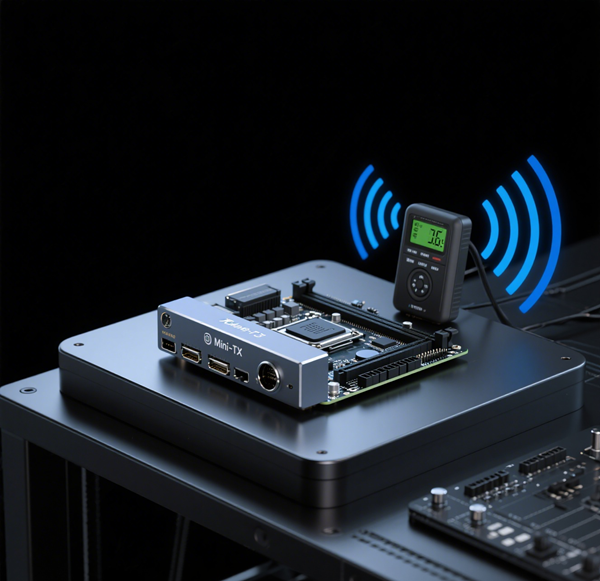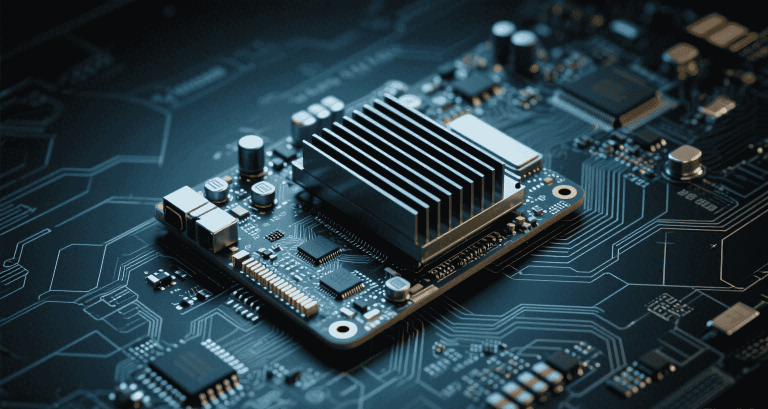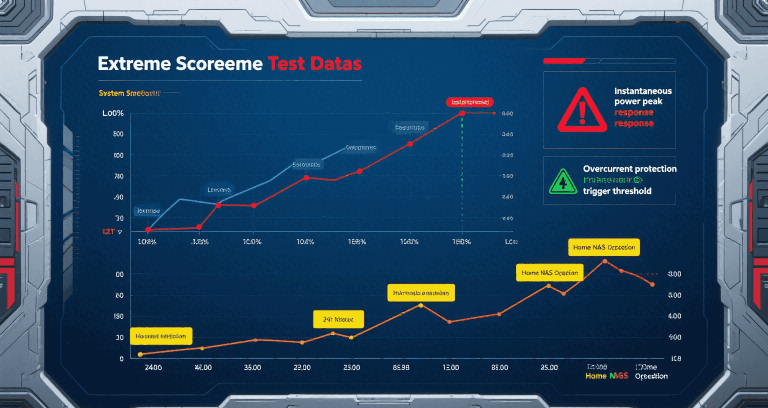Fanless Mini-ITX Boards: Silent, Reliable Embedded Computing

Table of Contents
- Introduction to Fanless Mini-ITX Boards
- Technical Overview and Architecture
- Advantages of Fanless Mini-ITX Boards
- Limitations and Design Challenges
- Application Scenarios and Use Cases
- Selection Criteria and Buying Guide
- Integration and Deployment Best Practices
- Comparison with Active-Cooled Mini-ITX Boards
- Future Trends in Fanless Embedded Computing
- Conclusion: Building Reliable, Silent Systems
Introduction to Fanless Mini-ITX Boards
In today’s embedded computing landscape, businesses are increasingly prioritizing low-maintenance, noise-free systems that can operate reliably under diverse conditions. Whether you are designing control cabinets for industrial automation, building secure IoT gateways for smart cities, or deploying interactive kiosks in public spaces, fanless Mini-ITX boards offer an excellent foundation. Their compact form factor (just 170 x 170 mm), low power requirements, and silent operation make them a preferred choice for mission-critical applications.
At MiniITXboard, we have supported integrators, OEMs, and IT departments worldwide in specifying and deploying embedded platforms that remain operational for years without active cooling. This guide explores what makes these systems unique and how to choose the right solution.
What is a Fanless Mini-ITX Board?
A Mini-ITX board is a standardized small motherboard introduced by VIA Technologies in 2001. Fanless models leverage passive cooling methods such as heat pipes, integrated heatsinks, and conductive enclosures to dissipate thermal energy effectively. Eliminating fans reduces moving parts, resulting in a quieter, more reliable platform that can operate continuously in dusty or vibration-prone environments.
The Importance of Fanless Design in Embedded Systems
Fans are among the most common causes of embedded system failure. They accumulate dust, introduce vibration that can damage delicate components, and eventually wear out. By removing them, system designers can build solutions with a higher Mean Time Between Failure (MTBF) and fewer maintenance requirements. Additionally, the absence of fan noise is critical in laboratories, healthcare facilities, and customer-facing installations.
Growing Demand for Silent, Low-Maintenance Platforms
Market research suggests the global market for fanless embedded computers will exceed USD 1 billion by 2026. This growth is driven by Industry 4.0, intelligent transportation systems, and the proliferation of edge computing. As devices are increasingly deployed outside data centers, thermal and acoustic considerations are taking center stage.
Technical Overview and Architecture
Designing a fanless system begins with selecting components optimized for low heat output. Let’s explore the architecture of a typical fanless Mini-ITX platform in detail.
CPU and SoC Options for Fanless Operation
ARM-Based Low-Power CPUs
ARM SoCs are popular in embedded applications because they integrate CPU, GPU, and peripheral controllers on a single chip. They offer exceptional performance per watt, allowing passive cooling even under demanding workloads.
| SoC Family | Cores | Max TDP | Features |
|---|---|---|---|
| NXP i.MX8 | 4–8 | 8W | Neural processing, secure boot |
| Rockchip RK3588 | 8 | 10W | 8K video, AI acceleration |
| NVIDIA Jetson Orin | 12 | 15W | CUDA cores for deep learning |
Intel Atom and Celeron Solutions
Intel Atom processors remain a leading choice for x86 compatibility and Windows/Linux support. They deliver modest performance while keeping thermal design power in the 6–12W range, ideal for fanless operation.
Thermal Design Considerations
Passive Heatsinks and Heat Spreaders
Thermal management is critical. Large aluminum or copper heatsinks draw heat away from the CPU and other high-power components. Heat spreaders often connect these heatsinks to the chassis, effectively using the enclosure as an extended cooling surface.
Heat Spreader Materials
| Material | Thermal Conductivity (W/mK) |
|---|---|
| Copper | 385 |
| Aluminum | 205 |
Conductive Enclosure Cooling
In fully sealed designs, the enclosure itself functions as a giant heatsink. Designers must ensure the external surfaces can radiate heat effectively, especially in warm environments.
Thermal Throttling Risks
If the cooling solution cannot maintain adequate temperatures, CPUs will throttle frequency, reducing performance. Selecting the right enclosure and validating thermal performance is essential.
Memory and Storage Options
Onboard RAM vs SO-DIMM
Some boards feature soldered RAM for improved vibration resistance and reduced power consumption. Others offer SO-DIMM slots for flexibility.
eMMC, M.2, and SATA Storage
Embedded systems often combine eMMC storage for boot and M.2/SATA SSDs for data. M.2 NVMe drives deliver excellent speed but generate more heat.
Connectivity and I/O Interfaces
Ethernet, USB, Serial Ports
Typical boards include multiple Gigabit Ethernet ports, USB 3.0/2.0 interfaces, and legacy serial ports for industrial equipment integration.
Display Outputs and Expansion
HDMI, DisplayPort, and LVDS outputs support a range of displays. PCIe slots or M.2 connectors allow additional expansion modules such as wireless cards.
Power Input and Efficiency
DC Input Ranges
| Range | Target Use Case |
|---|---|
| 9–24V | Industrial control cabinets |
| 12–36V | Vehicles and outdoor kiosks |
Power Consumption
Typical consumption ranges from ~5W idle to 25W under full load, making fanless Mini-ITX platforms highly energy-efficient.
Advantages of Fanless Mini-ITX Boards
Silent Operation
Without fans, systems are completely silent, eliminating distractions in noise-sensitive environments like hospitals or offices.
Improved Reliability
Fewer moving parts translate to fewer failure points. Many systems exceed 100,000 hours MTBF.
Dust Resistance
Sealed enclosures prevent dust ingress, protecting sensitive electronics.
Energy Efficiency
Low TDP CPUs and efficient DC conversion reduce power costs over the device lifecycle.
Compact Footprint
The 170 x 170 mm format allows easy installation in constrained spaces.
Limitations and Design Challenges
Performance Constraints
Passive cooling limits maximum CPU power and sustained performance during high loads.
Limited Expansion
While expansion is possible, the small form factor restricts the number of slots and modules.
Higher Cost
Specialized heat dissipation and rugged enclosures add to the bill of materials.
Environmental Temperature
Extreme ambient temperatures can impact stability and require careful system validation.
Application Scenarios and Use Cases
Industrial Automation
Fanless Mini-ITX systems drive PLCs, SCADA, and machine control in factories, where dust and vibration are constant challenges.
Medical Equipment
Silent operation and sealed construction make them perfect for diagnostic instruments and patient monitoring systems.
Digital Signage
Compact size and low maintenance ensure continuous operation in kiosks and information displays.
IoT Edge Gateways
Processing data near the source with low power consumption improves latency and reduces bandwidth usage.
Transportation
Vibration-resistant builds are ideal for rail, buses, and mobile command centers.
Selection Criteria and Buying Guide
Defining Requirements
Identify performance needs, I/O requirements, and environmental constraints before selecting hardware.
Certifications and Standards
Ensure compliance with EMC, safety, and regulatory standards relevant to your industry.
Environmental Sealing
Confirm the appropriate IP rating for exposure to dust or moisture.
Vibration Resistance
Evaluate shock and vibration certifications if deploying in vehicles or industrial sites.
Lifecycle Management
Verify product availability, support commitments, and software maintenance plans.
Software Compatibility
Check compatibility with your chosen OS, middleware, and development tools.
Integration and Deployment Best Practices
Enclosure Design
Use thermally conductive cases to maximize heat dissipation and protect against EMI.
Power Supply Sizing
Select power supplies with adequate headroom and redundancy where uptime is critical.
BIOS Customization
Configure BIOS for optimal fanless performance, secure boot, and watchdog timers.
Security
Enable TPM and secure boot to protect against tampering.
Remote Management
Implement remote firmware updates and monitoring to reduce maintenance visits.
Comparison with Active-Cooled Mini-ITX Boards
| Aspect | Fanless | Active-Cooled |
|---|---|---|
| TDP Range | Up to 25W | Up to 65W |
| Noise | 0 dB | 20–40 dB |
| MTBF | >100,000 hrs | ~40,000 hrs |
| Maintenance | Minimal | Periodic fan replacement |
Future Trends in Fanless Embedded Computing
Next-Generation SoCs
Emerging processors deliver higher AI and GPU performance while maintaining low power envelopes.
5G Integration
Built-in 5G modems will transform edge deployments by enabling high-speed, low-latency connectivity.
Sustainability
Manufacturers increasingly emphasize recyclable materials, longer lifecycles, and energy-efficient designs.
Conclusion: Building Reliable, Silent Systems
Fanless Mini-ITX boards represent the future of silent, dependable computing. By combining efficient processors, rugged enclosures, and thoughtful thermal design, you can deploy platforms that run quietly and reliably for years. At MiniITXboard, we can help you plan and integrate these solutions for your specific application. Contact us to discuss your project requirements.


